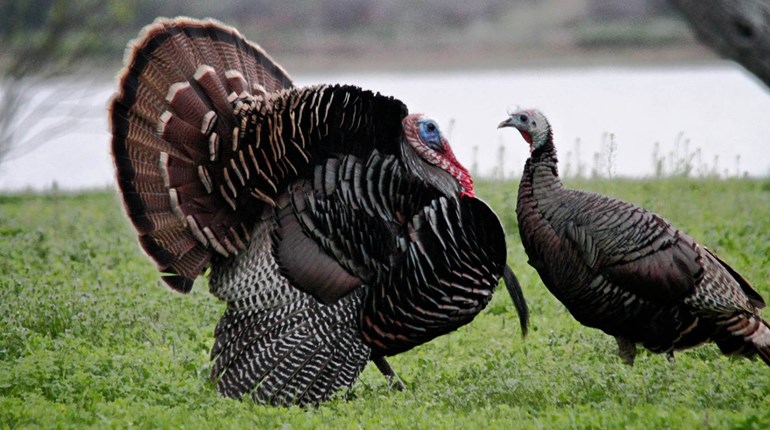
This article, "The Other Frontier Revolvers," appeared originally as a Fightin' Iron column in the December 2017 issue of Shooting Illustrated. To subscribe to the magazine, visit the NRA membership page here and select Shooting Illustrated as your member magazine.
Larger production numbers than its competitors put more Colt Peacemakers in consumers’ hands than other frontier-era gunmakers. Shown above, from left to right, Colt Single Action Army "Peacemaker," Merwin-Hulbert Frontier, Smith & Wesson No. 3 and the Remington Model 1875.
It is probably true that Wyatt and his brother Morgan Earp, as well as the tubercular dentist “Doc” Holliday, carried Colt Peacemakers on that autumn day in 1881. Virgil Earp reportedly preferred the Smith & Wesson marque and was so armed when he joined two of his five brothers on their legendary stroll down to the OK Corral. There was also a 12-gauge Meteor scattergun, suitably shortened for intimate conflict, in play. Even if the researchers had never discovered anything about the armament used at the OK Corral shooting, it would have been statistically unlikely for anything other than the traditional Colt to be present. That’s simply because there were far more specimens of the Colt in circulation than any of the other three major brands. The Peacemaker was what you used when you went out to make the peace. Unhappily, it was too often the means of breaking the peace, but that is a conundrum I cannot easily resolve. History doesn’t recall the grand-old Model P as the Peacebreaker; quite the contrary.
I have examined, handled, fired and sometimes owned examples of four major fighting revolvers used in the frontier era—the time from the end of the Civil War to the turn of the 20th Century. They were the Colt Frontier Model, the 1875 Remington, several models of the Merwin, Hulbert and even more varieties of Smith & Wesson’s No. 3 top-break. For their fighting potential, all were encountered as .44 or .45 calibers and they are all strong, powerful and beautifully finished firearms. But, they are also quite bulky and rather heavy. Some historians have claimed that Wyatt Earp carried a 7 ½-inch-barreled .45 Colt Peacemaker to the OK Corral—in his pocket. Such a practice was not uncommon, nor was simply thrusting one of those big revolvers into the waistband. Using holsters was probably not as widespread as Hollywood would have us believe.
Historically, we can establish that the same four major revolver makers—Colt, Remington, Smith & Wesson and Merwin, Hulbert—made lighter, smaller and less-powerful alternatives to their full-size .44s and .45s. These guns likely never saw the inside of a holster, most commonly riding in pockets and waistbands. They are .38s and are built on lighter and more-portable frames. Interestingly enough, in the same time period, there were even smaller .32s. Let’s look at these, the other frontier revolvers.
Remington made several kinds of cap-and-ball revolvers in the Civil War period and earlier. In 1875, it went with the flow and came out with the 1875 Model, a large revolver that gave the 1873 Colt a strong run for its money.
In that vigorous market of the 1860s and ‘70s, all the handgun makers struggled to outdo one another and the relatively new firm of Smith & Wesson was no exception. Its tip-up series of revolvers—the No. 1s and No. 2s—were the first wheelguns to use fixed metallic cartridges. Smith & Wesson followed up with top-break, big-bores called the No. 3s, which were highly competitive well into the 20th century. The company did not neglect the mediums, many of which bore striking resemblance to the larger No. 3 series.
Merwin, Hulbert and Co. was a frontier-era gunmaker that built revolvers of small, medium and large sizes. The .44s came in several models, as did the .38s. Some of each caliber had the unique feature of a folding hammer spur. A Merwin Hulbert shooter thumb-cocked the folding spur to touch off the first one in single-action trigger mode. The hammer spur closed back down when the gun fired, leaving it ready for a second DA shot. It’s clever, but the true distinguishing feature of all Merwin Hulberts was selective ejections. All of them had a jointed frame that rotated 90 degrees around the cylinder axis and then pulled forward. Fired brass fell away, but unfired cartridges remained in the cylinder. The medium .38 was a popular wheelgun on the frontier.
For Colt Firearms, that had developed the favored pistol of that period, the idea of a medium was old hat. The company had built medium-frame caplocks in the pre-Civil War days and set out to develop a cartridge gun as soon as the Single Action Army was up and running. Introduced in 1877, the Colt Lightning differed from the larger Peacemaker in more ways than size. Working from a scaled-down version of the SAA frame, Colt designers added double-action and single-action lockwork and a unique so-called “birds-head” grip. It was a graceful and attractive revolver, but never renowned for durability. Many of them fired Colt’s own .41 Long Colt cartridge and bore the menacing title of Thunderer. These guns often appear in period photos.
It is an interesting category of antique firearms. While the big .44s and .45s were the most-often-seen fighting handguns, they were not the only ones in use on the frontier. Production numbers of various medium-size models tell us that tens of thousands of them were built. For example, Colt made in excess of 160,000 Lightnings. Where did they go?
They went west, young man, they went west, where they were put to work as fightin’ iron.


































